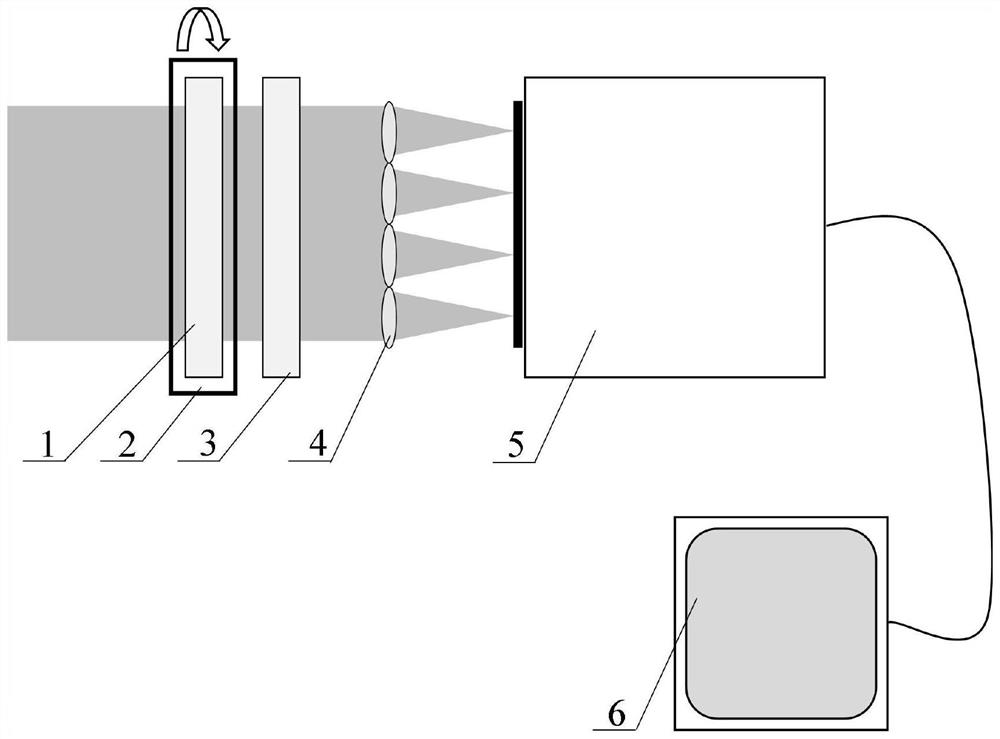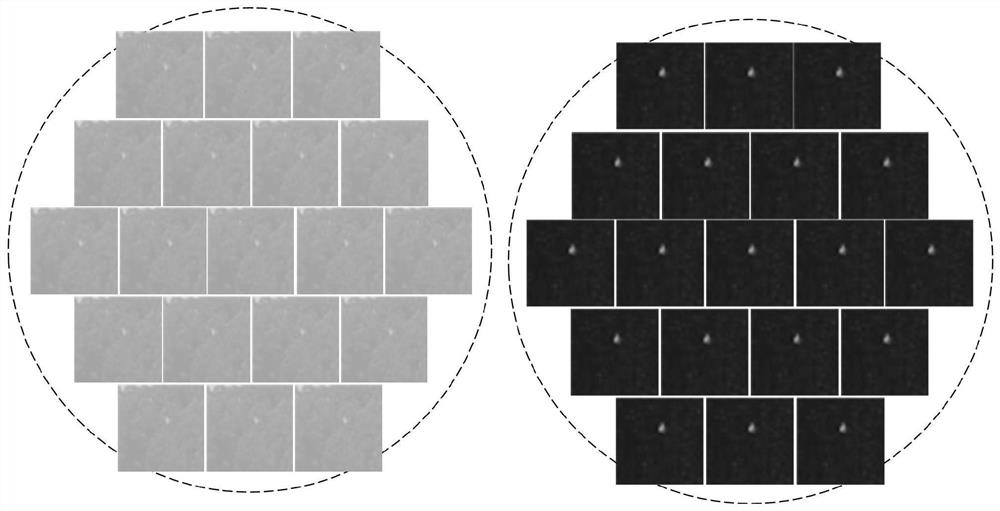A polarization-modulated Hartmann-Shack wavefront detection device
A polarization modulation and detection device technology, applied in measurement devices, measurement optics, optical radiation measurement, etc., can solve problems such as indistinguishability, reduced wavefront detection accuracy, failure, etc., achieve high signal-to-background ratio, and improve wavefront detection accuracy. Effect
- Summary
- Abstract
- Description
- Claims
- Application Information
AI Technical Summary
Problems solved by technology
Method used
Image
Examples
Embodiment Construction
[0037] The present invention is further described below in conjunction with the accompanying drawings and specific examples.
[0038] like figure 1 As shown, a polarization modulation Hartmann-Shack wavefront detection device is composed of a wave plate 1 , a wave plate rotating mechanism 2 , an analyzer 3 , a microlens array 4 , a light intensity detector 5 , and a data processor 6 . The incident light including the target light and background stray light enters the polarization modulator composed of the wave plate 1 and the analyzer 3 to modulate the polarization state of the incident light; the incident light after polarization modulation continues to propagate forward, And enter the microlens array 4, and is divided into M×N sub-areas, each sub-area is a micro-lens, which images the divided incident light on the photosensitive surface of the light intensity detector 5, and obtains the corresponding sub-area. Image intensity distribution. The wave plate 1 is installed on ...
PUM
 Login to View More
Login to View More Abstract
Description
Claims
Application Information
 Login to View More
Login to View More - R&D
- Intellectual Property
- Life Sciences
- Materials
- Tech Scout
- Unparalleled Data Quality
- Higher Quality Content
- 60% Fewer Hallucinations
Browse by: Latest US Patents, China's latest patents, Technical Efficacy Thesaurus, Application Domain, Technology Topic, Popular Technical Reports.
© 2025 PatSnap. All rights reserved.Legal|Privacy policy|Modern Slavery Act Transparency Statement|Sitemap|About US| Contact US: help@patsnap.com



